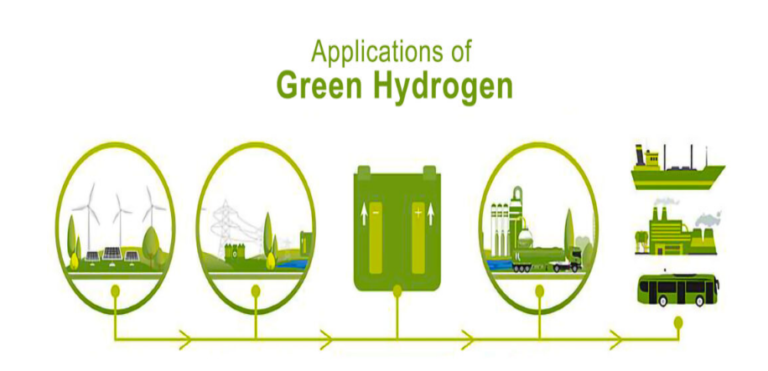Green Hydrogen: Powering a Sustainable Future

-by Jigyasa Gambhir (Senior Research Associate- TCE)
In search of sustainable energy solutions for the future, the spotlight has turned to green hydrogen—a game-changer in the journey towards a cleaner and greener future.
The journey of hydrogen dates back to the late 18th century, when scientists like Henry Cavendish and Antoine Lavoisier discovered this versatile element. Over the years, various production methods emerged, with the late 20th century witnessing a significant shift towards integrating renewable energy, paving the way for green hydrogen.
Hydrogen, the most abundant element in the universe, holds tremendous potential as a clean energy carrier. Green hydrogen is produced through electrolysis, wherein renewable energy sources such as wind or solar power are used to split water into hydrogen and oxygen. The process produces zero carbon emissions, making green hydrogen a genuinely sustainable energy source.

Green hydrogen has significant advantages for the environment. It significantly reduces harmful air pollutants associated with fossil fuel combustion, enhances air quality, and aids in achieving climate targets by decarbonising sectors that are challenging to electrify directly, such as heavy industry, shipping, and aviation. One of the most important benefits of green hydrogen is its potential to store excess renewable energy during low-demand or high-generation periods, allowing for efficient electrolysis and conversion back to electricity when needed. Green hydrogen's versatility extends across various sectors, including transportation, agriculture, mining, and electricity generation. It can also be used as a fuel cell to power vehicles, as a feedstock in industrial processes, and even for residential heating and cooking, offering a scalable solution to our energy needs.

Despite its immense potential, green hydrogen faces several challenges, including high production costs, limited renewable energy availability, energy-intensive processes, infrastructure constraints, and inadequate policies. However, these challenges can be addressed through technological advancements, increased production, supportive policies, and public awareness.

Across the globe, initiatives like the California Hydrogen Highway, Germany's Hydrogen Strategy, India's National Hydrogen Energy Mission, and the Green Hydrogen Policy Framework promote innovation and infrastructure development while presenting abundant economic opportunities ranging from job creation to market growth and enhanced export potential.
As we navigate towards a sustainable future, conducting feasibility studies, analysing policies, and integrating green hydrogen into sustainability strategies are crucial. With continued investment, innovation, and collaboration, we can harness the full potential of green hydrogen by opening the way for a cleaner, greener tomorrow and unlocking the pathway towards economic growth and environmental stewardship for generations to come.
